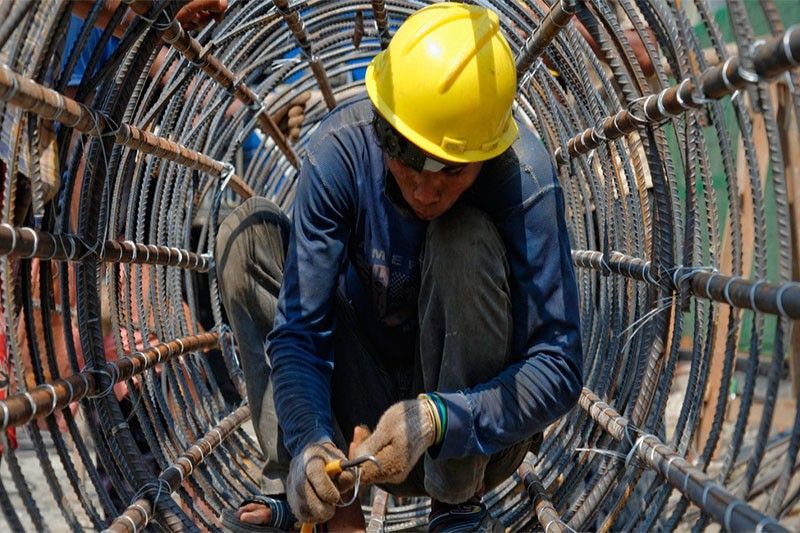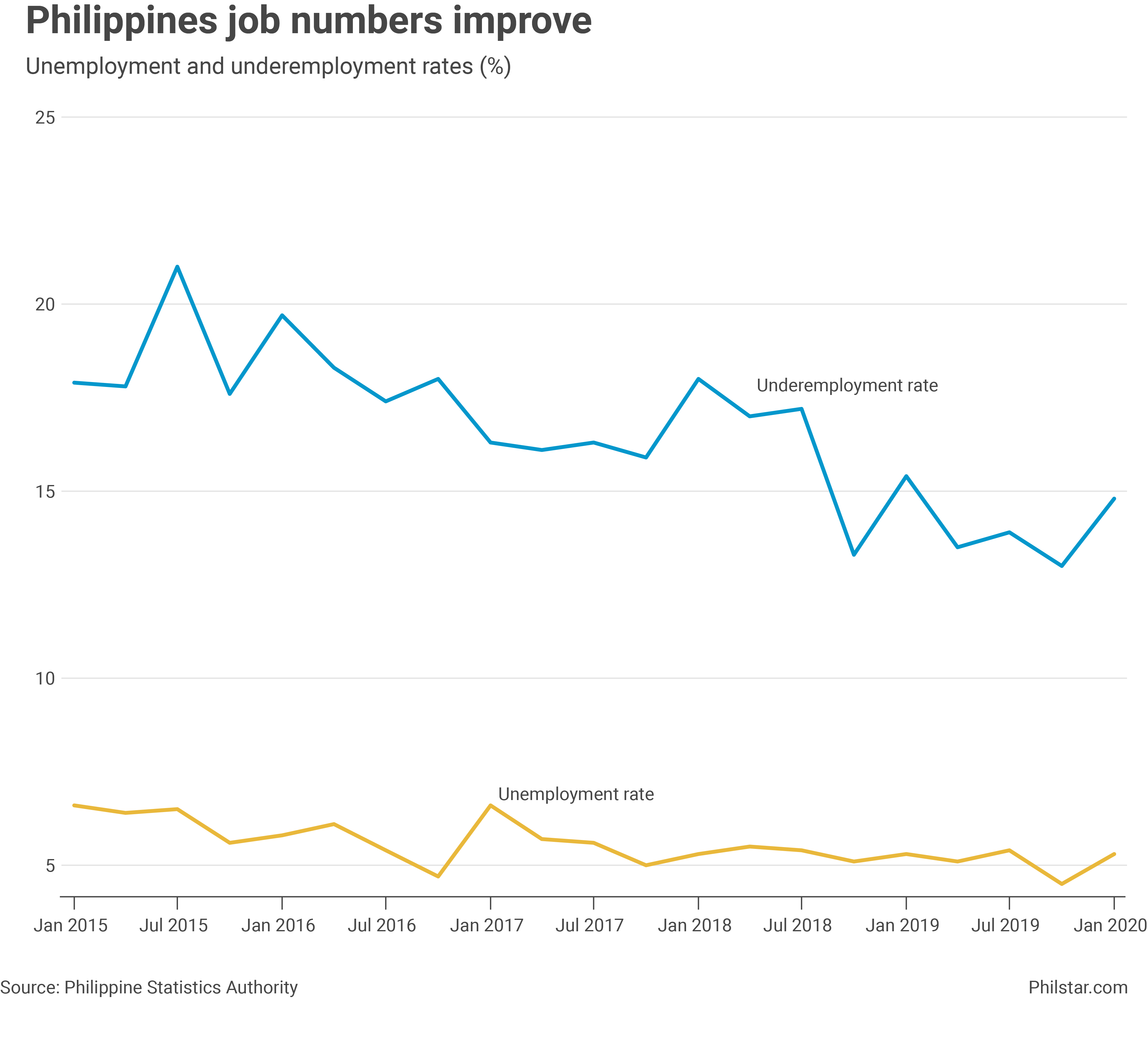Jobless rate steady, but quality of work improves in January

MANILA, Philippines — The jobless rate held steady in January from same period a year ago, but the government recorded gains in improving the quality of work of Filipinos, a signal that the economy is in strong footing as it braces for impact from the coronavirus.
The unemployment rate— the proportion of Filipinos without work against those in the labor force— stood at 5.3% in January, the Philippine Statistics Authority (PSA) reported on Thursday.
Broken down, the number of employed individuals rose 4% year-on-year to 42.65 million as of the first month of 2020, but this was completely offset by an increase of a similar magnitude in the number of people in the labor force aged 15 and up to 45.04 million.
This is good news since it shows that the economy is able to generate jobs just as more people enter the labor market. The labor force participation rate rose to 61.7% from 60.3% in the comparative period, a sign that more people are actively looking for work, PSA data showed.
But the highlight of the report was the decline in underemployment rate to 14.8% in January from 15.4% same period a year ago, an indication that less Filipinos are looking for more work or additional jobs to augment earnings.

“The ‘fiscal stimulus’ that is ‘Build, Build, Build’ can definitely help improve job creation at least in the short- and medium-term,” said Ruben Carlo Asuncion, chief economist at UnionBank of the Philippines, in a text message.
Data support Asuncion’s comments. A little more than half of workers in the industrial sector were from construction, where large spending on infrastructure under “Build, Build, Build,” would have a direct impact on the number of jobs. The rate was up from just 41.2% in January 2015, figures showed.
Worries that construction work also creates poor quality jobs were belied by official data, at least as of January. By sector, industry ranked last in the number of underemployed at 18.1%, albeit still higher than average.
The services sector, where service crews in restaurants and fast-food chains are counted, topped the list with 46% of people there underemployed, while farmers and fisher-folk underemployment hit 35.9%.
Michael Ricafort, economist at Rizal Commercial Banking Corp., agreed with Asuncion’s assessment. “Going forward, the sharp increase in government spending... would help spur greater job creation as well as greater growth for businesses that are part of the supply chain of infrastructure projects…,” he said.
This “would effectively offset any adverse effects of coronavirus,” he added.
- Latest
- Trending





























